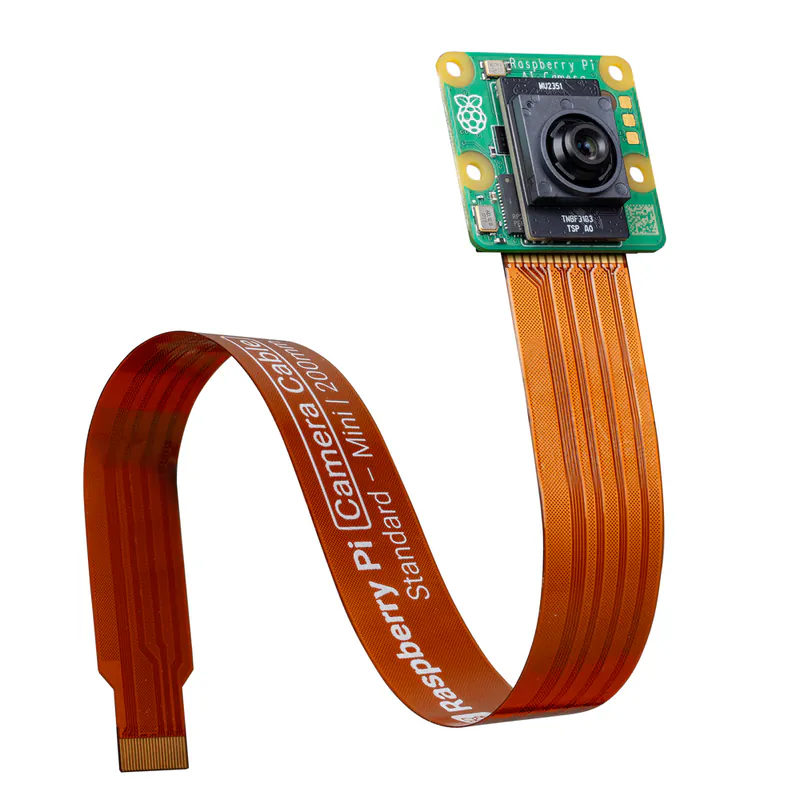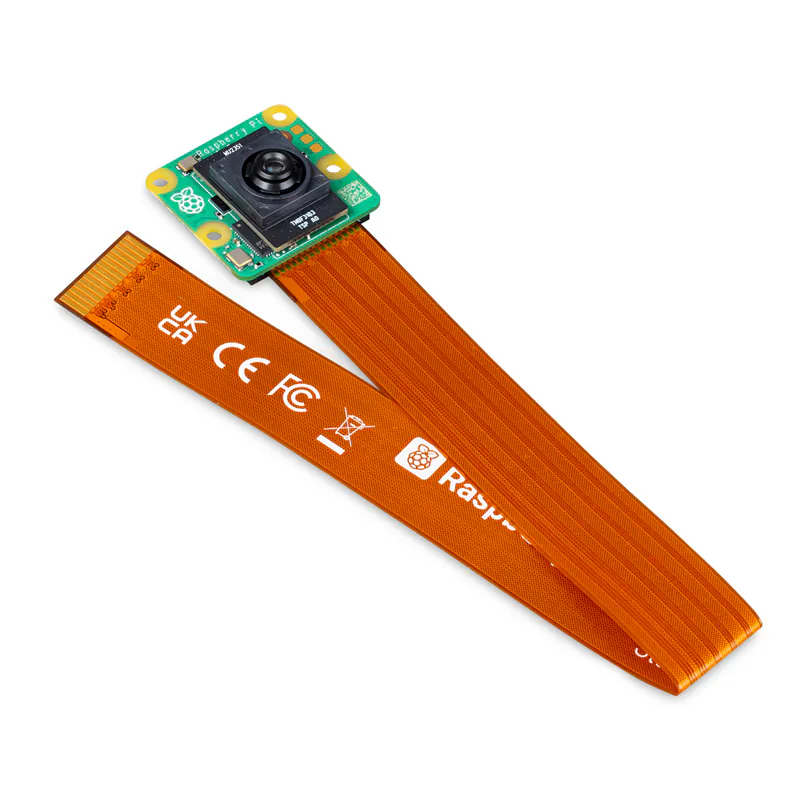【產品簡介】
The Raspberry Pi AI Camera is a compact camera module from Raspberry Pi, based on the Sony IMX500 Intelligent Vision Sensor.
IMX500 combines a 12-megapixel CMOS image sensor with on-board inferencing acceleration for a variety of common neural network models,
enabling users to develop sophisticated vision-based AI applications without the need for a separate accelerator.
The AI Camera transparently augments captured still images or video with tensor metadata,
leaving the processor in the host Raspberry Pi free to perform other operations.
Support for tensor metadata in the libcamera and Picamera2 libraries, and in the rpicam-apps application suite,
make it easy for beginners to use, while offering advanced users unparallelled power and flexibility.
The Raspberry Pi AI Camera is compatible with all Raspberry Pi computers.
The PCB outline and mounting hole locations are identical to those of Raspberry Pi Camera Module 3,
while the overall depth is greater to accommodate the larger IMX500 sensor and optical subassembly.
【出貨清單】
● 樹莓派 AI 鏡頭 x1
● CSI 排線(15 pin,適用於 Pi 2/3/4)x1
● CSI 排線(22 pin,適用於 Pi Zero/Pi 5)x1
● 鏡頭調節工具 x1
【產品介紹】
Using Sony’s suite of AI tools, existing neural network models using frameworks such as TensorFlow or PyTorch can be converted to run efficiently
on the AI Camera. Alternatively, new models can be designed to take advantage of the AI accelerator’s specific capabilities.
Under the hood
To make use of the integrated AI accelerator, we must first upload a model. On older Raspberry Pi devices this process uses the I2C protocol,
while on Raspberry Pi 5 we are able to use a much faster custom two-wire protocol.
The camera end of the link is managed by an on-board RP2040 microcontroller; an attached 16MB flash device caches recently used models,
allowing us to skip the upload step in many cases.
Once the sensor has started streaming, the IMX500 operates as a standard Bayer image sensor, much like the one on Raspberry Pi Camera Module 3.
An integrated Image Signal Processor (ISP) performs basic image processing steps on the sensor frame (principally Bayer-to-RGB conversion and cropping/rescaling),
and feeds the processed frame directly into the AI accelerator. Once the neural network model has processed the frame,
its output is transferred to the host Raspberry Pi together with the Bayer frame over the CSI-2 camera bus.
Integration with Raspberry Pi libcamera
A key benefit of the AI Camera is its seamless integration with our Raspberry Pi camera software stack. Under the hood,
libcamera processes the Bayer frame using our own ISP, just as it would for any sensor.
We also parse the neural network results to generate an output tensor, and synchronise it with the processed Bayer frame.
Both of these are returned to the application during libcamera’s request completion step.
【文件下載】












